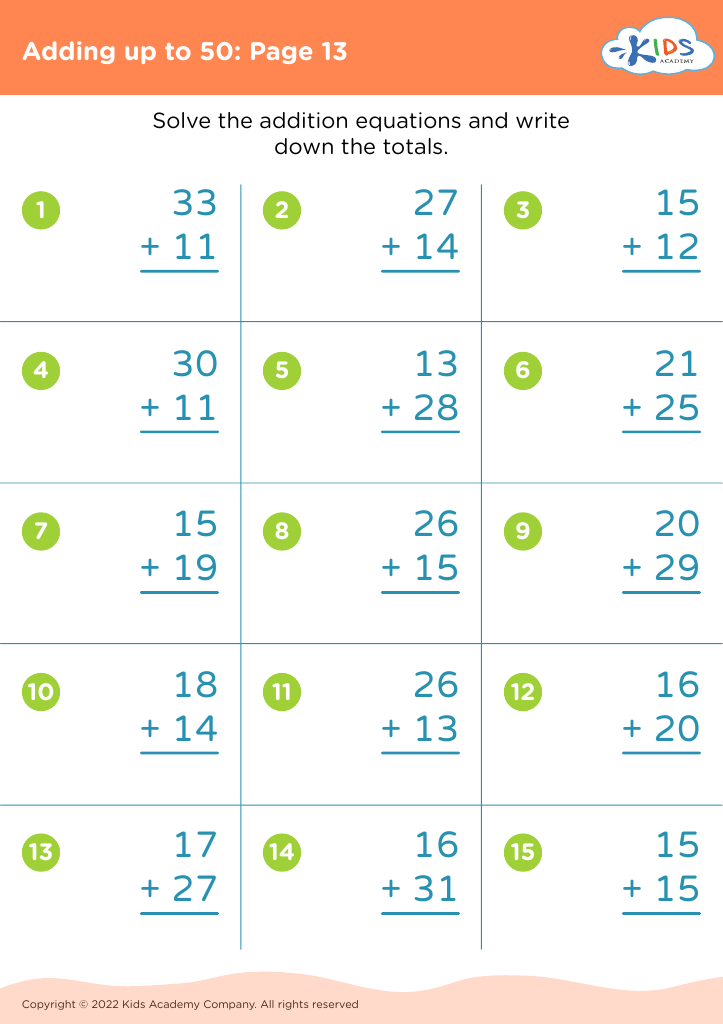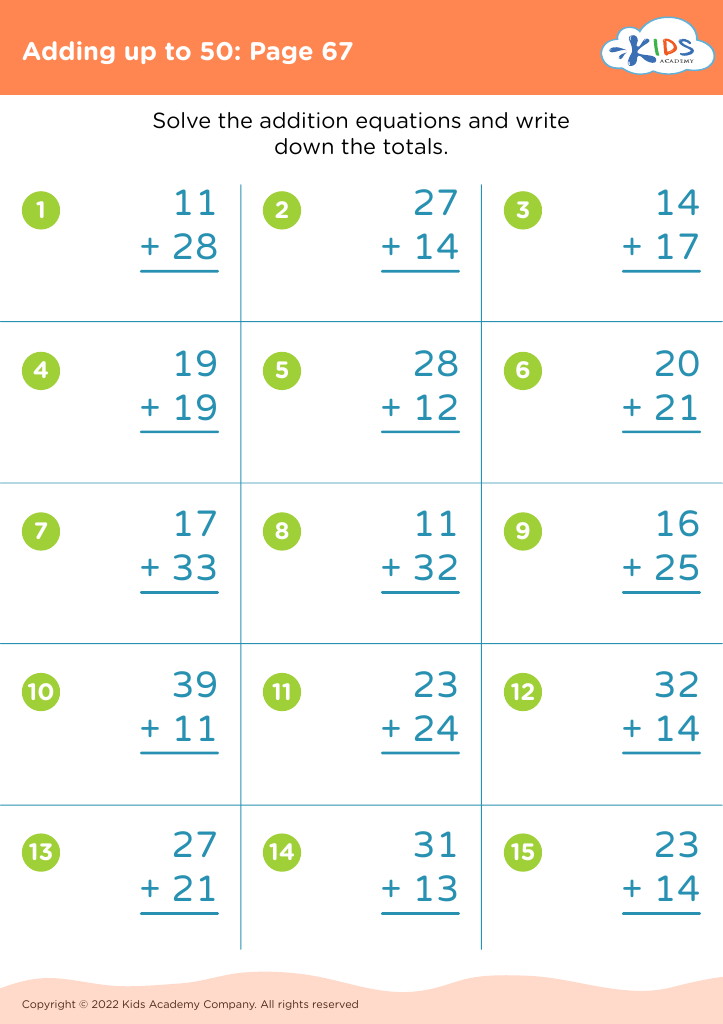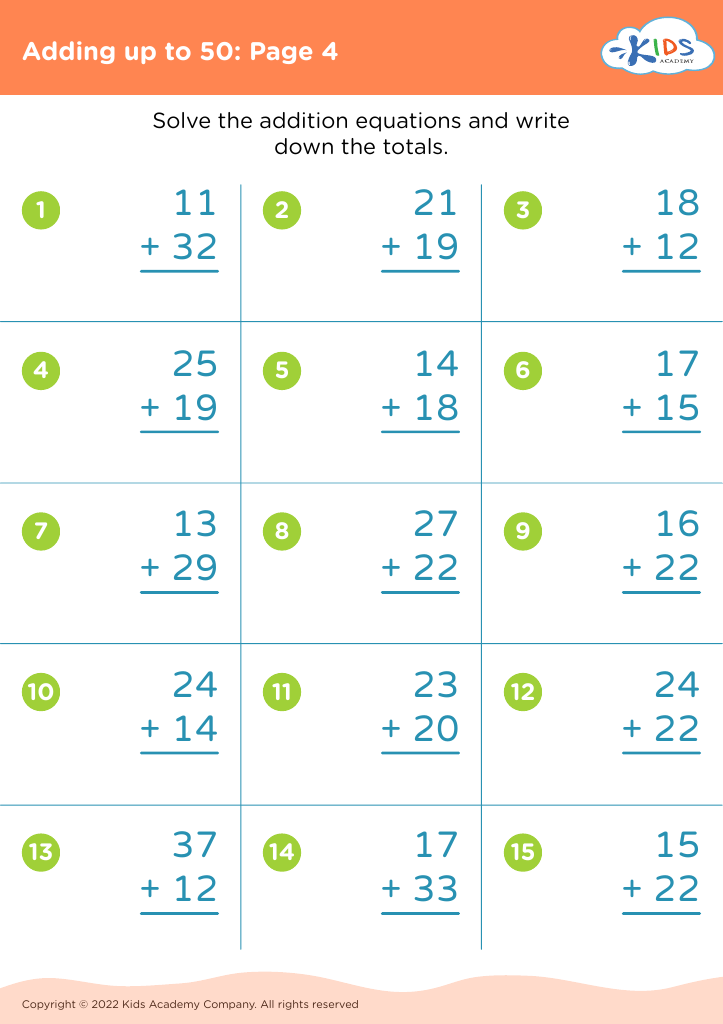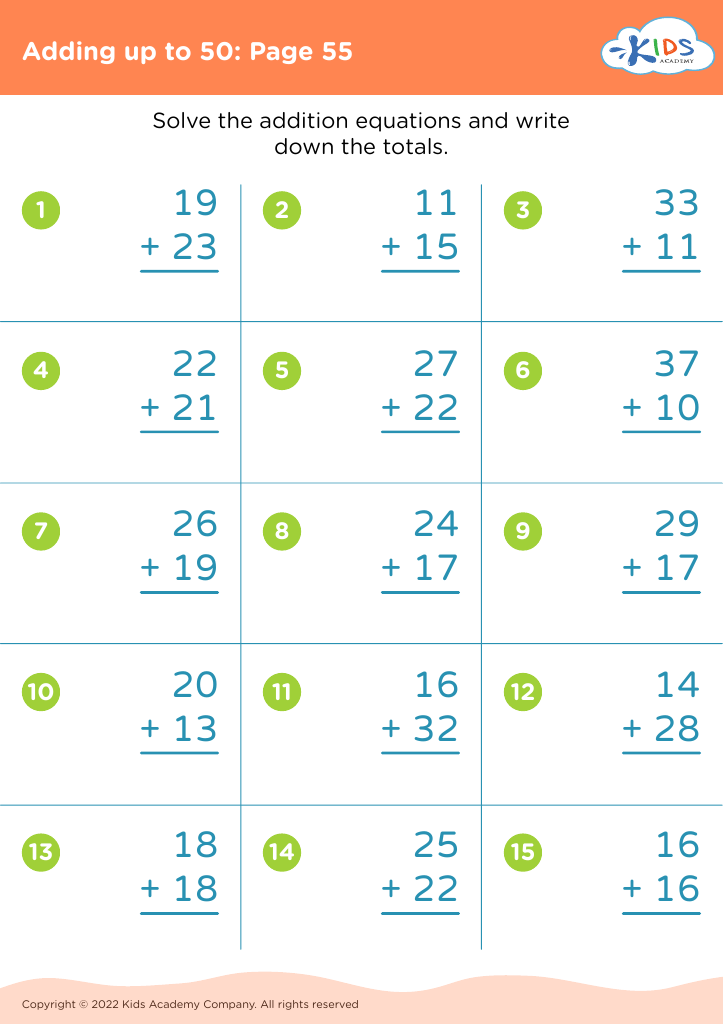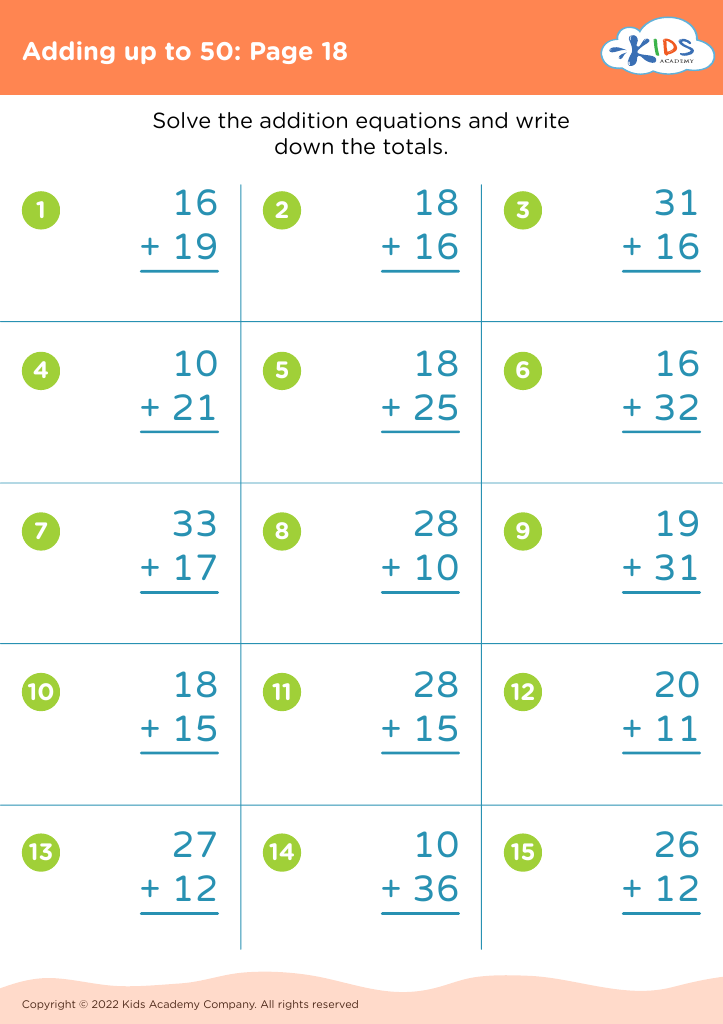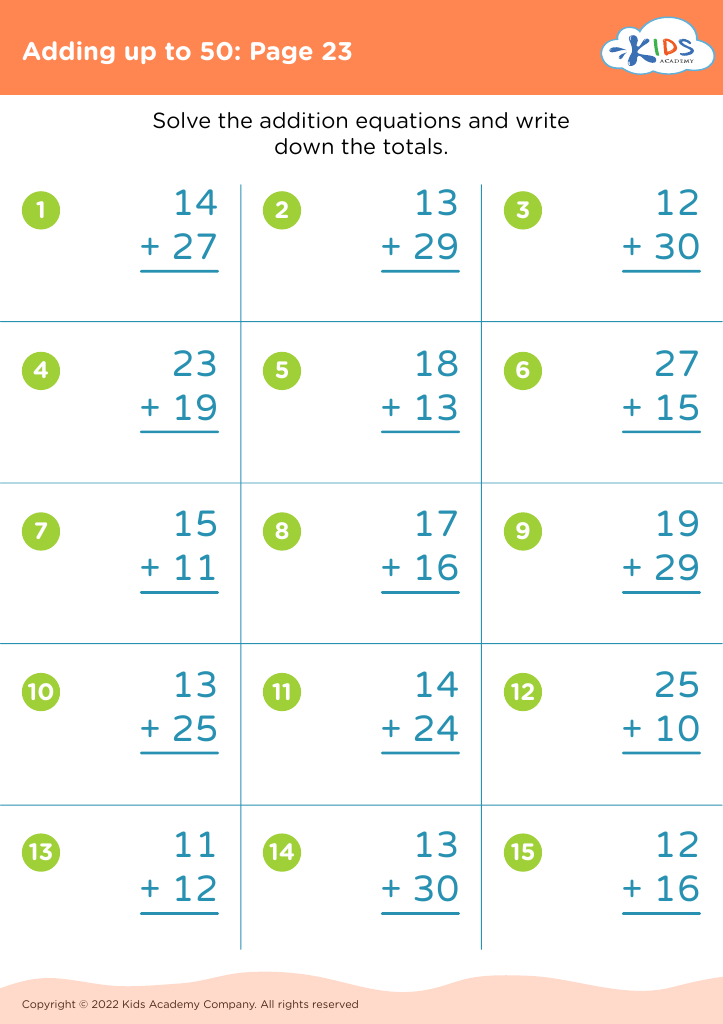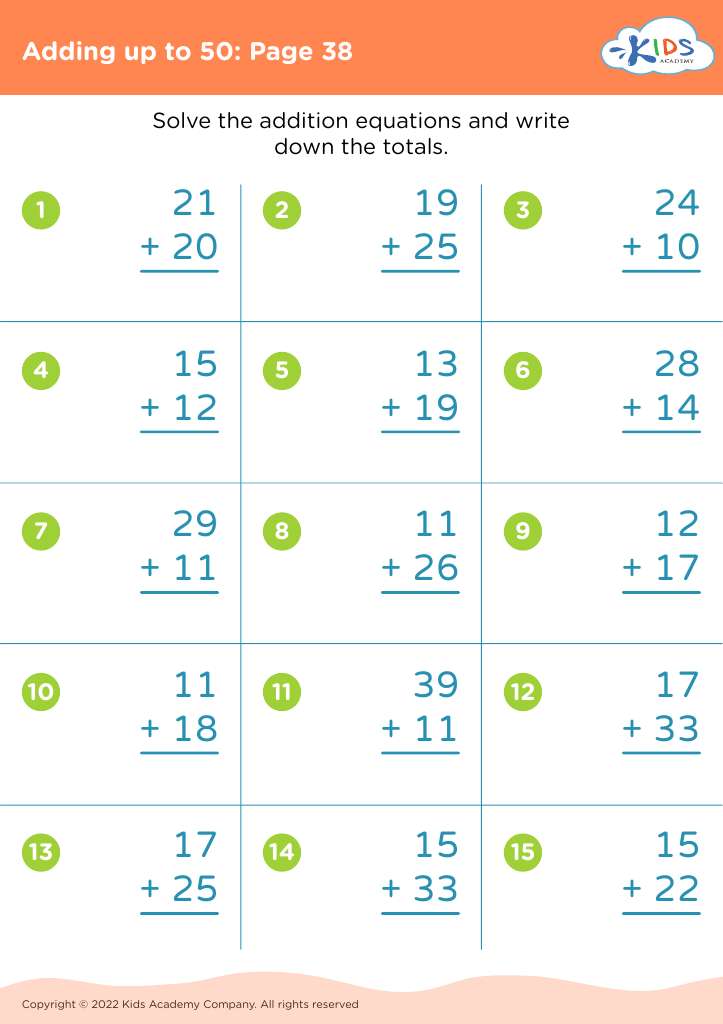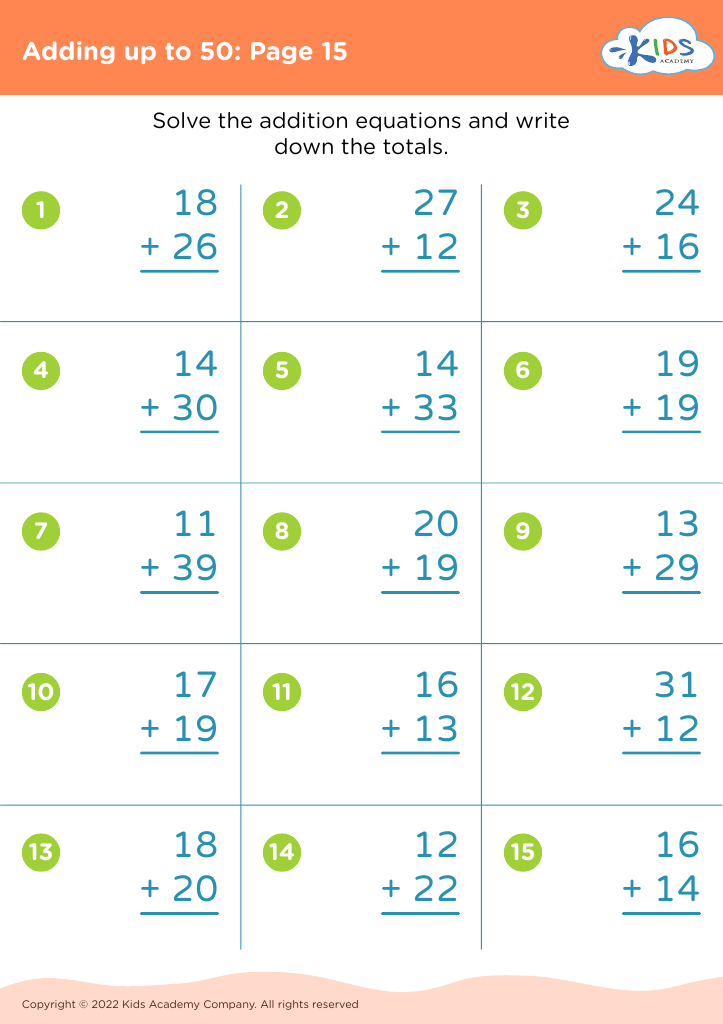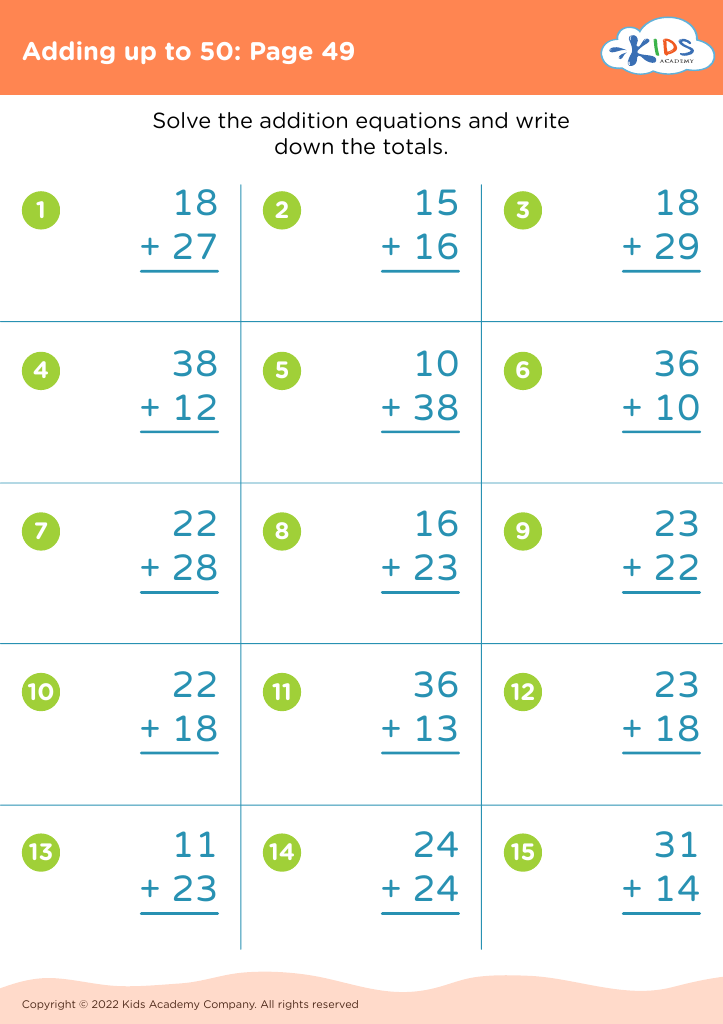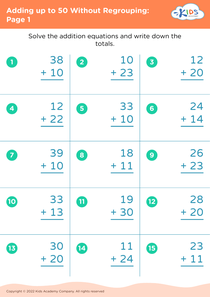Comparing Fractions Adding up to 50 Misc Worksheets for Ages 7-8
11 filtered results
-
From - To
Explore our engaging "Comparing Fractions Adding up to 50 Misc Worksheets" designed specifically for kids aged 7-8! These worksheets provide a fun and interactive way for young learners to grasp the concept of comparing fractions. Through colorful visuals and engaging activities, children will develop essential math skills while working with fractions that add up to 50. Perfect for home practice or classroom use, these resources foster critical thinking and strengthen understanding of fractions in a practical context. Support your child's math journey with our comprehensive worksheets, ensuring a solid foundation for future math skills! Start exploring today for a richer learning experience!
Comparing fractions and understanding how to work with them is essential for children ages 7-8, as it lays the foundation for more complex mathematical concepts. Parents and teachers should care about this skill because it helps young learners develop critical thinking, problem-solving, and analytical skills that are applicable beyond mathematics.
When children compare fractions, they gain insights into the concepts of greater and lesser values, which enhance their comprehension of quantity. For instance, evaluating fractions that add up to a certain sum, like 50, encourages them to explore relationships between parts and wholes. This practice strengthens their numeric literacy and promotes an understanding of equivalent values.
Additionally, these skills prepare children for real-life situations. Whether sharing a pizza or measuring ingredients for a recipe, knowing how to compare and manipulate fractions will aid them in daily activities. Engaging students with relatable examples makes math enjoyable and relevant, fostering a positive attitude towards the subject.
Lastly, by ensuring children grasp fraction comparison, parents and teachers cultivate a sense of confidence in math, motivating them to embrace challenges in future mathematical endeavors. Emphasizing this knowledge will promote overall academic growth and self-esteem in young learners.

